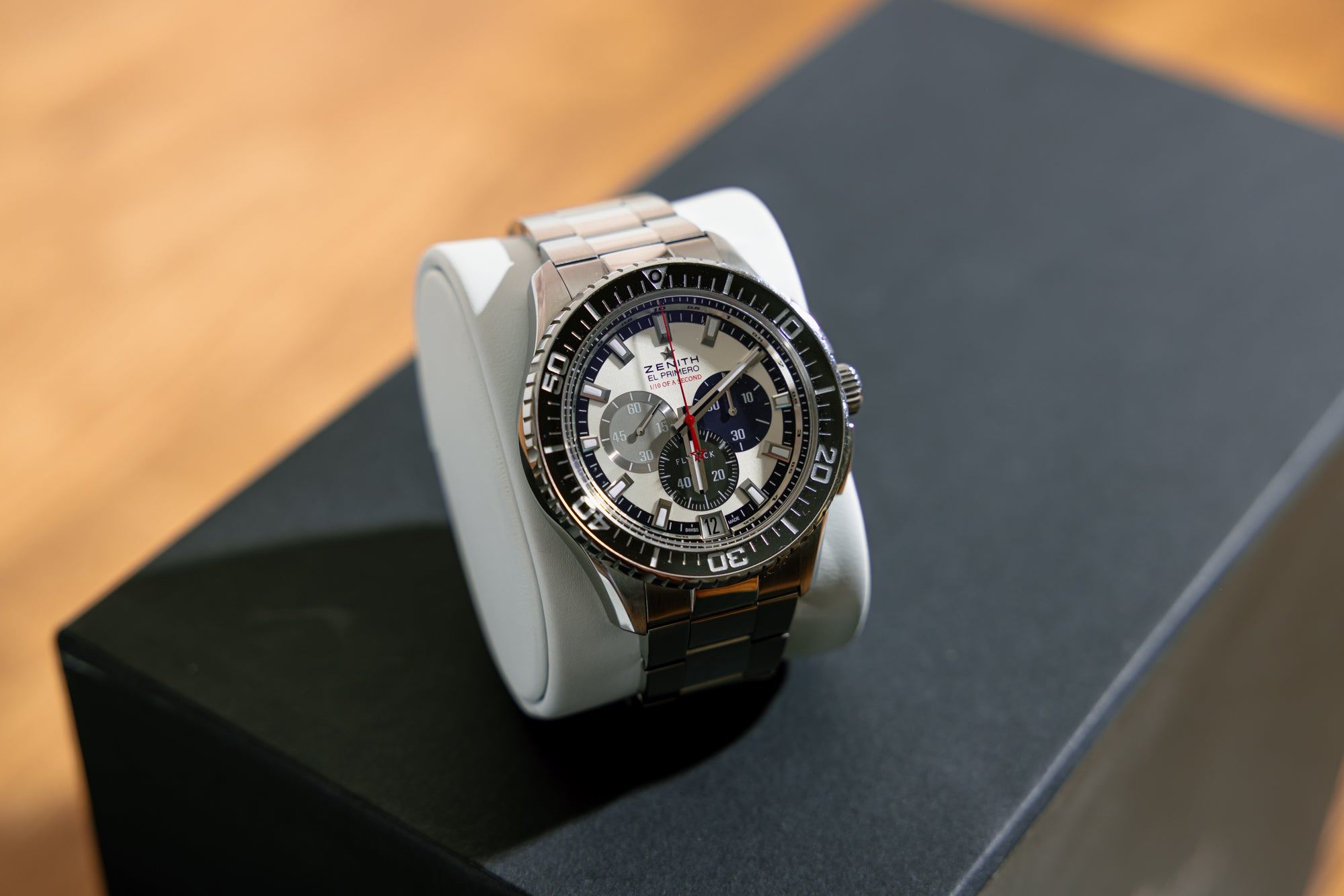Why was the Omega Seamaster Planet Ocean “Big Blue” such an instant hit and an important watch for Omega? Find out here…
When it comes to watches and ceramics, a few names deserve some recognition. One in particular would be Rado with its use of high-tech ceramic and its experimental approach to hard, resistant materials since the 1980s. Another brand specialising in ceramic is Omega, with this material appearing in its Seamaster range. Mastering the process of adding colour to ceramic is another feat in watchmaking, enabling a case to add a pop of colour to the wrist. Ceramic’s tough, scratch-resistant properties have been utilised by Omega in its black cases, adding stealth to a design, while its white ceramic cases are somewhat contemporary and sporty. Blue, however, is a colour that can be equated to the brand’s “Big Blue” watch – a design you may be familiar with if your preference for Omega watches lies within its innovative dive watch range. The Omega Seamaster Planet Ocean “Big Blue” GMT watch acquired its nickname from the environment from which it was inspired. It marked the first Omega wristwatch to be crafted entirely from blue ceramic.
By the time Omega had launched the Speedmaster “Dark Side of the Moon”, ceramic had already been widely used throughout the industry in every capacity aside from the movement itself. The case, bezel, dial, pushers and buckle of a watch had been enjoyed in this lightweight yet ultra-strong material. Since that 2013 release, Omega hasn’t been resting on its laurels one bit. The watchmaker released the “Big Blue” from the Seamaster series four years later. It was a dive-come-travel watch, clad in virtually scratch-resistant material and in an ocean blue hue. It was the blue version of the previous year’s Omega Seamaster Planet Ocean Deep Black watch, representing an accumulation of desirable features: the water resistance of a dive watch, the convenience of a time zone tracking complication, and the scratch resistance needed for daily wear. It also featured a mix of contrasting polished and brushed finishes, which cleverly gave it the appearance of a metal case.
That Deep Black design did away with the bidirectional GMT bezel to give the watch a predominantly diver-focussed functionality. Instead, the brand equipped the dial with a 24-hour track. The change enabled the watch to be enjoyed as a robust diver with the option to monitor a second time zone should the wearer need it. Fast forward to the birth of the “Big Blue”, and this watch garnered a lot of attention, more so than the “Deep Black”, because of its palpable full-colour case.
The Omega Seamaster Planet Ocean “Big Blue” watch was manufactured from a single block of blue ceramic – even the dial was made from the same material. The case measured a wide 45.5mm diameter and sat on the wrist at a depth of 18mm, making it a hefty tool watch with considerable presence. Despite these bold proportions, they were saved by the lightweight properties of the ceramic case, enabling the diver to explore unfathomable depths with a superior 600-meter water resistance – a feature it shared with the rest of the watches belonging to the Planet Ocean collection.
Interestingly, the vibrant shots of orange around the bezel and along the strap lining made this blue ceramic Seamaster appeal to a different audience. Resonating with young sports watch fans, the accents on the bezel were delivered in bright orange rubber, giving them a luminous appearance even in the daylight. Liquid metal was also used in the rotating bezel, while the orange-coloured elements continued into the “Seamaster” and “GMT” lettering on the dial. The display featured additional orange decoration in the Arabic numerals, positioned at the cardinal points of the hour track and in the legible GMT hand. A glimpse at the screw-down crown revealed a bright orange Omega stamped logo, and the 24-hour scale around the periphery, in vibrant orange, was hard to miss against the deep blue display.
The orange and blue colour scheme was a palette that many collectors approved, whether new to the Omega name or not. Before long, the watch became shortened to the “Big Blue”, and fellow enthusiasts far and wide would instantly recognise the name. The watch was very big and blue but also had a hefty price tag. Still available today, Omega retails the watch at £11,600, but pre-owned models are now circulating the market for around £7-8k. Collectors believe that, despite the case being crafted from a lightweight metal alternative, the Seamaster “Big Blue” doesn’t feel or look tacky in any sense of the word. Its lightweight feel on the wrist is ideal for wearing while partaking in sports, but it takes on a relaxed, sporty style when dressed casually.
Under the blue ceramic dial of the Omega Seamaster Planet Ocean “Big Blue” is the Omega Calibre 8906 - a chronometer-certified engine with a power reserve capability of 60 hours and a silicon balance spring that’s impervious to the damage of magnetic fields. The movement offers METAS-certified accuracy, too, not to mention 15,000 gauss anti-magnetic technology and hand-finished decoration that can be viewed through a sapphire exhibition caseback. The screwed-down caseback also features Omega’s Naiad locking system that ensures the engravings on the caseback remain upright and properly oriented.
Undoubtedly, the Omega Seamaster Planet Ocean Big Blue watch is still a sought-after model today, whether those seeking to purchase the watch brand new or from the pre-owned market for a more affordable price. Its nickname, the “Big Blue, is now recognised amongst Omega fans and has certainly influenced many other manufacturers in their experimentation with ceramics in watchmaking.
Looking for a particular Omega watch and can’t see it on our website? Call and speak to a member of our Charles Martin sales team today, where we can advise on our ability to source your dram watch for you on 01889 560 002 or email us on sales@charlesmartinwatchcompany.com.


0 comments